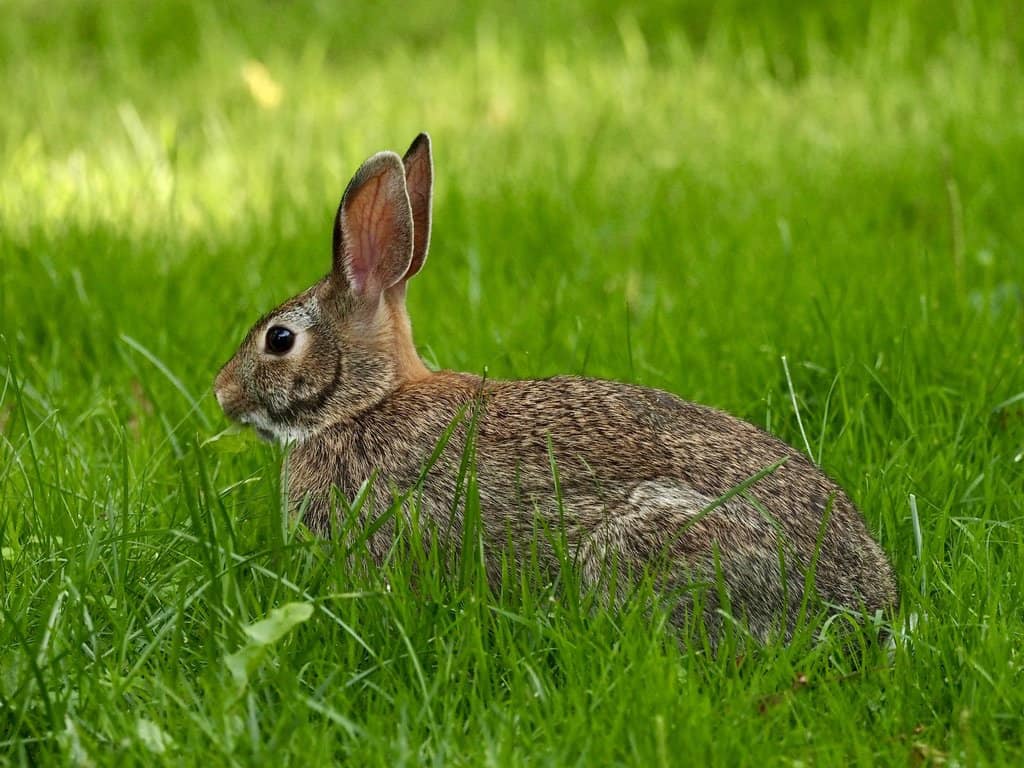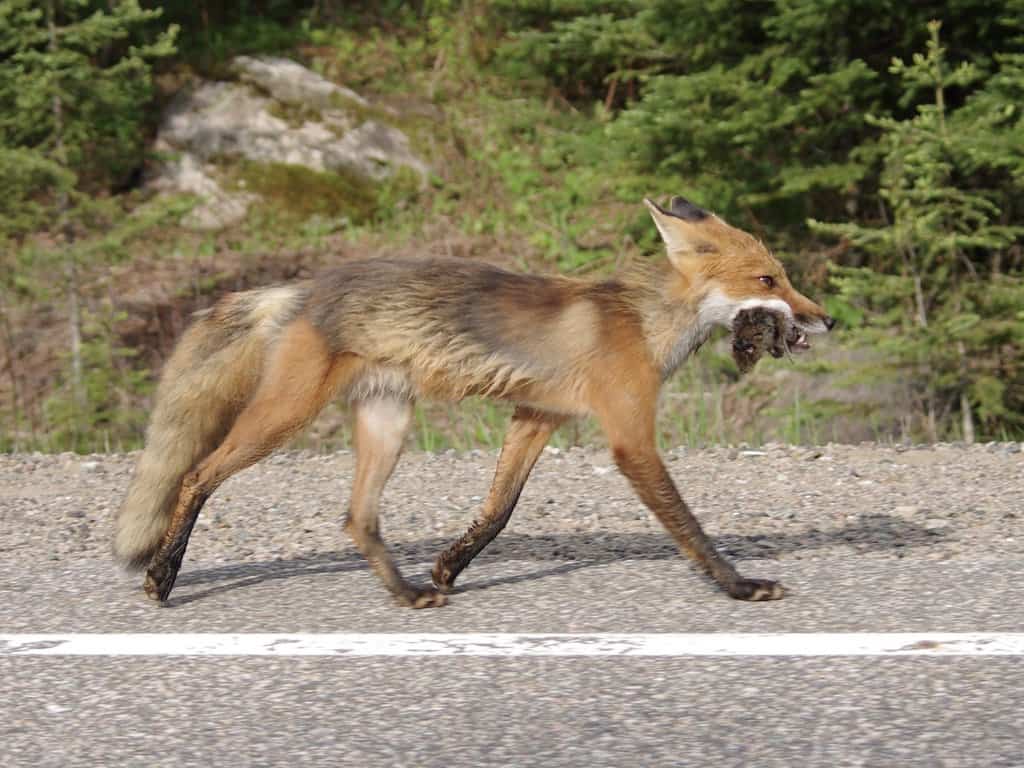Cottontail rabbit numbers have exploded. Gardeners aren’t impressed.
Peterborough Examiner – October 4, 2024 – by Drew Monkman
“Drew, you won’t believe what the rabbits have eaten now!” If my wife said this once this summer, she said it a hundred times. Since last spring, our gardens and those of our neighbours have been the rabbits’ personal smorgasbord as they’ve devoured everything from coneflowers, turtleheads and honeysuckles to hostas, maidenhair ferns and even some milkweeds. Last winter, burning bush was one of their favourite menu items.
For the last three years, “bunnies” – the word of choice for many people these days – have more than lived up to their reputation as prolific breeders and garden snackers. Last summer, we often counted 20 or more on our evening walks. Even now, we can expect to see at least one or two rabbits every time we go outside. In years past, seeing just one was a rare and even exciting event. I’d always grab my camera to get a few shots of these attractive, docile animals.

Cottontail biology
Before I delve into what might explain the upsurge in rabbit numbers, let’s review some basic facts about these animals. First, we have two native species of lagomorphs in central Ontario – the eastern cottontail rabbit and the snowshoe hare. Cottontails, named for their cotton ball-like tails, are the species we see in and around Peterborough. Snowshoe hares are limited to northern parts of the county, turn white in winter and are larger than rabbits.
Depending on weather conditions, cottontails can start breeding as early as late February and continue until September. After a gestation period of only 28 days, the 3 to 8 young are born in a shallow ground nest lined with dried grass and tufts of fur. These nests are sometimes located even in flower beds. The mother covers the babies with just enough grass and fur to keep them warm, since the only time she spends at the nest is when she feeds them. They mature quickly and are self-sufficient after only 4 or 5 weeks.
Cottontails are sexually mature after just 2 or 3 months and about one-third of females can breed in their first summer. A mother sometimes mates again within 24 hours of giving birth. This means that by the time her first babies are five weeks old and on their own, she can give birth to a second litter. A female can have as many as five litters in one year. It’s no wonder that populations are able to grow with staggering speed.
Cottontails eat grass, clover, leaves, shoots and the fruits and flowers of many plants. In winter, they tend to eat soft bark, buds and twigs. Although their average life span in the wild is only about 15 months, some may live up to five years.
Why so many now?
Although cottontail populations do cycle naturally between highs and lows, the abundance we’ve seen locally in the past 3 or 4 years is far higher than anything I remember. There are a number of reasons that explain the on-going bunny boom. First, rabbits benefit from the “human shield” in most urban and suburban areas. Predators like great horned owls tend to shy away from these areas. This is not the case with cottontail predators like red foxes and even coyotes, however. Both of these rabbit predators are often able to thrive in close proximity to humans and directly benefit from human-modified environments such as our gardens, yards, cemeteries and parks. Many people have told me that they’re seeing far fewer foxes and coyotes in Peterborough than in the past.
One person wrote on r/Peterborough, a discussion group on an internet platform called Reddit, “We had a family of foxes in our neighbourhood a few years ago. Squirrels, rabbits and groundhogs all disappeared. My vegetable garden and I miss those foxes.”

Red foxes and coyotes have been struggling with mange these last few years. Mange is caused by a tiny mite that burrows under the animal’s skin and causes an infection, often affecting the eyes. When this happens, they can no longer hunt which leads to starvation. Mange is expected to increase under climate change and may already be doing so. Warmer temperatures allow more mite reproduction and faster development. The same is true for parasites of all kinds including ticks.
Wild rabbits have a low survival rate. The population tends to thin in the winter as many die from starvation, exposure and predation. The record warmth and sparse snow cover of recent winters, however, has been a “benediction”(excuse the pun) for rabbits. Last winter was a staggering 5C warmer than usual, while the winters of 2023, 2022, 2021 and 2020 were all about 3 C warmer than average.
Warm winters mean rabbits don’t have to work as hard to get food and to avoid predators. Their grayish-brown coloration provides excellent camouflage when snow cover is sparse. Milder winters may also allow reproduction to begin earlier than normal.
Deterring rabbits
The surest way to prevent rabbit damage is to exclude them. To protect your garden or individual trees or shrubs, you need to erect a fence measuring at least two feet high. The mesh should be one inch or smaller and the bottom tight to the ground. You can also place a dome or cage of chicken wire over a small flower bed.
Something else worth trying is to overseed your lawn with clover. This will provide the rabbits with a ready source of food and possibly divert their attention from other plants. As for commercial rabbit repellents and home remedies, they may work to some extent but I haven’t had much success.
Entertaining to watch
Since high cottontail numbers are probably here to stay, we might as well make the most of it. Rabbits can be as entertaining to watch as their famous television peers like Bugs and the Energizer Bunny. This is especially true for their mating rituals.
Although most of the show happens under cover of darkness, you can also catch some of the action at dusk and dawn. In act one, the male will chase the female in a playful but determined manner. In this way he’s able to showcase his physical prowess. If the female is sufficiently impressed, the pair will rise up to touch each other with their front paws, almost as if playing footsie. They will then sit as still as statues for a while before the male makes a head-on run at his love interest. At the last moment, the female leaps straight up in the air as the suiter sometimes passes directly below her. Random dashes and other gymnastics are also part of the show. To see a great video of rabbit courtship, go to YouTube and search “Cottontails Cavorting MBO blog”. Alternatively, enter https://tinyurl.com/3wpx9fch in your browser.
An easier behaviour to see is nose twitching. Cottontails have an excellent sense of smell thanks to the 100 million or so scent receptors in their noses. Twitching exposes the scent receptors and allows the animal to sniff out danger or detect another rabbit. If you wish to count them, expect about 20 to 120 nose twitches a minute!
Despite the exasperation that rabbits might cause, a little understanding and a few precautions can help us tolerate and maybe even enjoy these fascinating wild animals who share our backyards and cities.